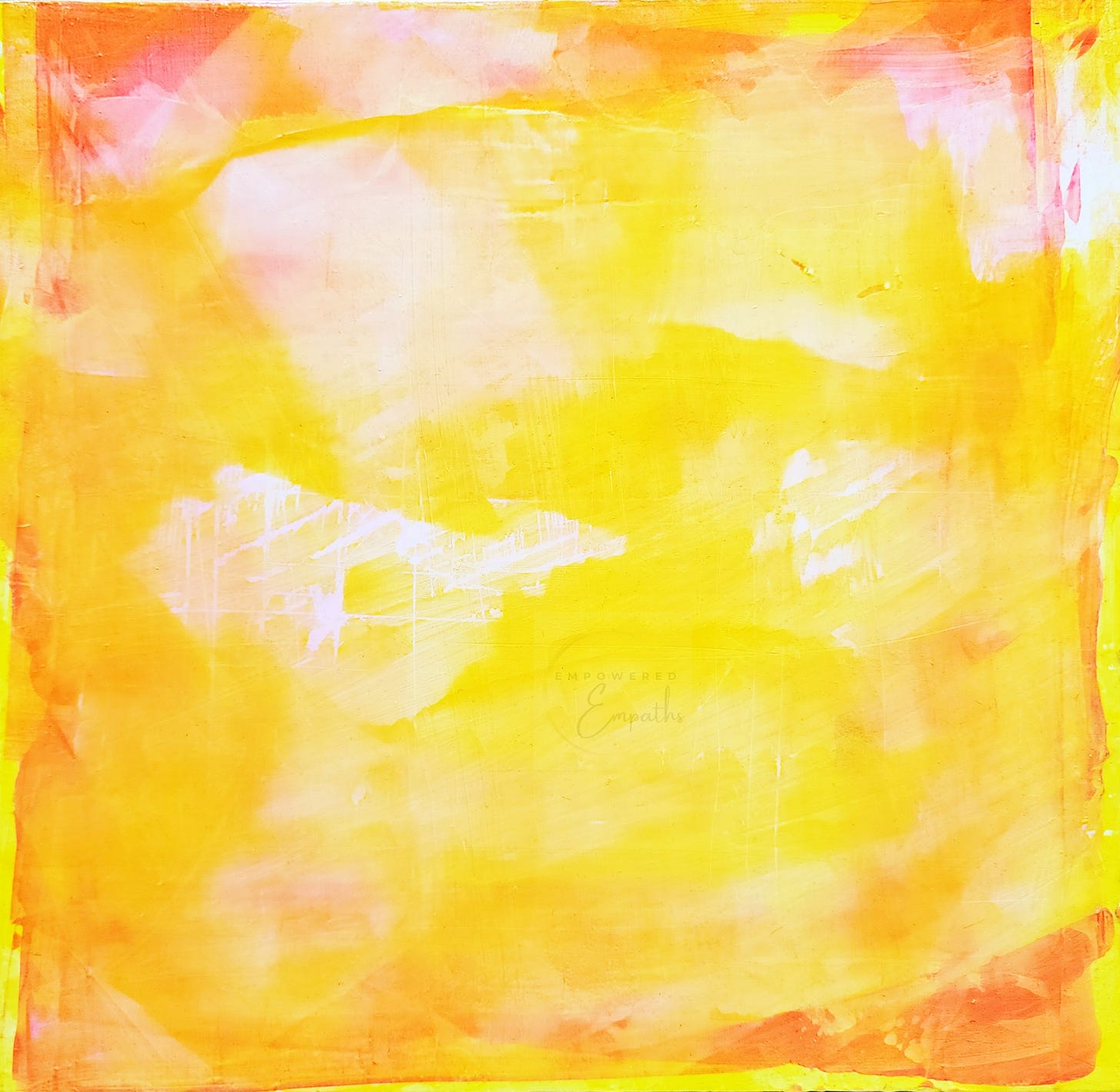Can I Give Myself Permission to Show the Colors That Are Me?
Lately, I've been catching myself doing something absurdly funny in the studio. I lay down these brilliant, almost unruly fluorescents—the pinks and oranges and greens that sing to me—and then, almost without thinking, I soften them. I cover them with white glazes. I tone them down.
Even though I know how much they light me up. Even though I know these are my colors. Even though I know they're just waiting for me to let them be.
It's absurd because so much of my life is about permission and joy and aliveness—and then here I am, literally glazing over the very thing that brings me joy.
A Lifetime of Glazing Over
This isn't just about today. I can see the whole thread of it.
In Chicago, I painted my bedroom a brilliant turquoise-blue and woke up every morning feeling like I was under water. That room was my private ocean. But I was in art school, and the art scene then demanded black: black clothes, black frames, black professionalism. So black became my favorite color.
When I moved to Portland, muted blues and mossy greens became the acceptable camouflage of belonging. They were the only proper colors for sporty outdoor wear—worn everywhere, just in case a spontaneous desire for a hike hit. I wore those too.
The colors I loved showed up only in safe and decorous spots I could enjoy daily—curtains, sheets, journals, a neon hoodie, the occasional orange wall. Small doses of delight I didn't have to explain. Like cherry ice cream—you like it or you don't, no one needs a reason.
And yet—I kept taking photos of those same colors: surreal sunsets, shocking spring greens, flowers so impossibly pink they hurt. They were always calling me.
Safety, Power, and Proximity
Looking back, I see how black became my visual proximity to power. Black says: take me seriously. Black says: I know the rules.
Fluorescents? They say: joy, aliveness, unruliness. And for a long time, I didn't think I could have both power and joy. So I swapped my colors for some power.
The irony, of course, is that being fully, loudly, unapologetically me is the real power.
Color as Proxy for Pleasure
The colors we're drawn to are never arbitrary. They live in us already, vibrating in our bodies, feeling like home.
When I allow myself to paint with fluorescent pink, I'm not just choosing a pigment—I'm metabolizing delight. I'm saying yes to more aliveness in my body, yes to more sensation, yes to the frequencies that make me feel awake and lit up.
And then the questions come tumbling out:
How much delight am I really letting in? Where's the ceiling I've set on my own joy?
Permission, Desire, and the Upper Limit
I just read Glynnis MacNicol's I'm Mostly Here to Enjoy Myself and can't stop thinking about it. She models what it looks like to find pleasure entirely on her own terms, and it makes me ask: what would it mean if I really let my delight lead the way?
I've been rereading Gay Hendricks' The Big Leap lately too - part of this artist intensive I'm doing. That book is all about upper limits—how we unconsciously decide how much joy and success we're "allowed" to have.
So when I glaze white over fluorescent pink, that's my upper limit showing up on the canvas. That's my internal police saying: "That's too much color - no one will like it!"
But what if the thing I keep calling "too much" is actually the exact right dose?
The Real Permission Slip
Here's what I keep circling back to:
Denying color is denying sensation. And when sensation lands, so does joy.
Color isn't just pretty—it does things. Important things.
That's my work right now: How honest will I be? How much of myself will I actually let show up?
Not just creating art, but creating permission to be seen in full color. Can I show up in my colors?
The power is in letting my joy take up space.


